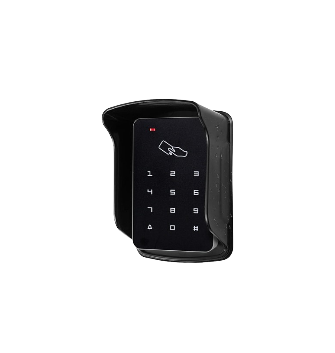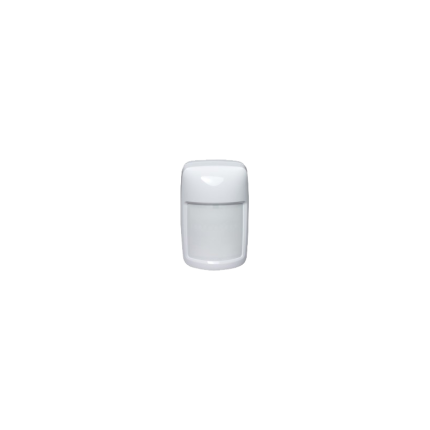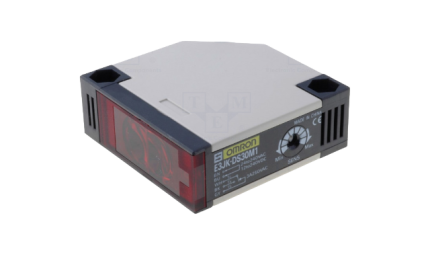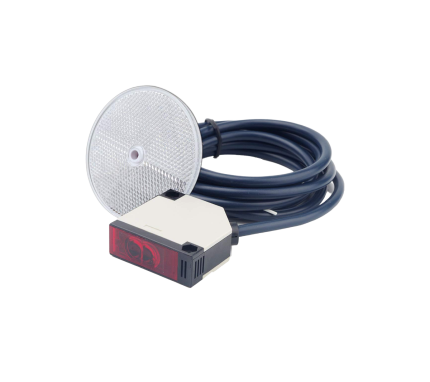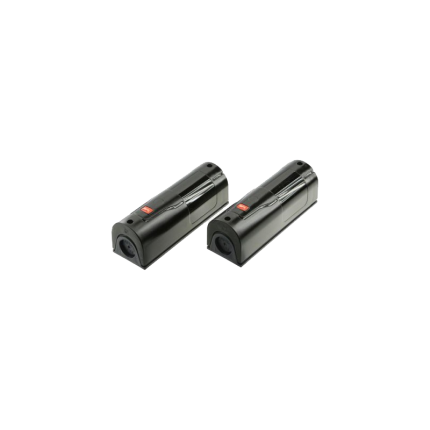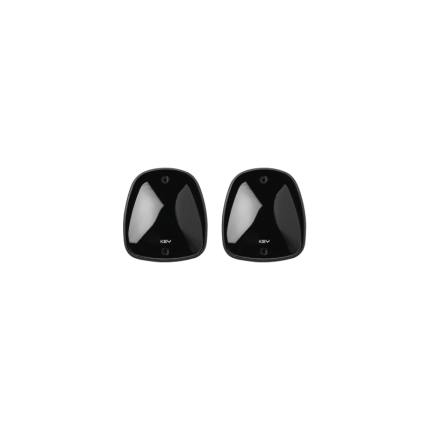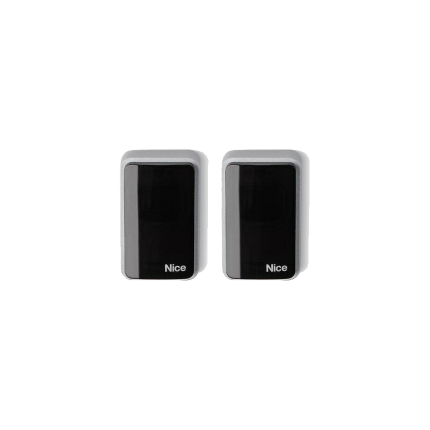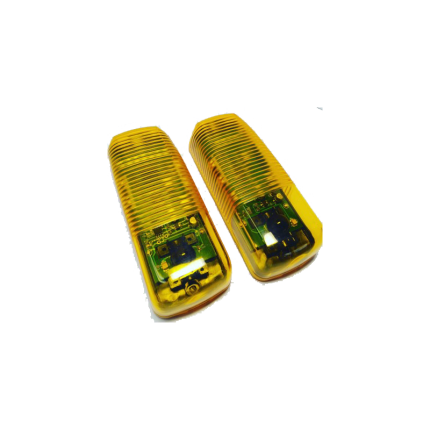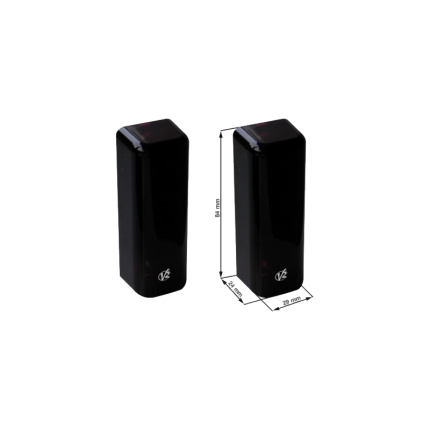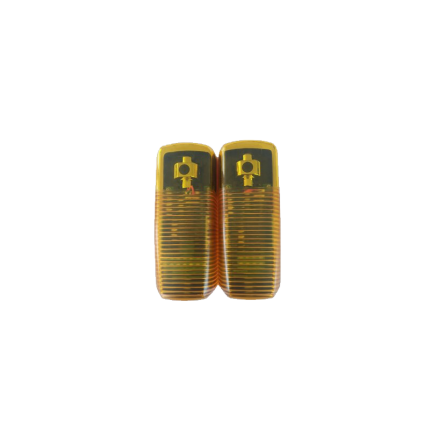safety
Keypad Access Control K110V2000
Keypad Access Control K110V2000
The Keypad Access Control K110V2000 is a standalone access control system designed for single-door access, typically used for residential or small-to-medium commercial buildings.
It allows users to unlock the door using either a proximity card, a PIN code, or a combination of both.
Here's a more detailed breakdown:
Key Features:
- Multiple User Capacity: It can support up to 1000 users.
- Multiple Access Methods: Users can unlock the door using RFID cards, PIN codes, or both.
- Standalone Operation: It functions independently, without needing to be connected to a central computer.
- Wiegand Input/Output: It can connect to an external card reader (Wiegand 26 input) and a controller (Wiegand 26 output).
- Tamper Alarm: Includes a tamper alarm for added security.
- Backlit Keypad: The keypad is backlit, making it easier to use in low-light conditions.
- Short Circuit Protection: The output is automatically turned off if there's a short circuit in the electric lock or alarm output.
- Waterproof: Some models, like the V2000-C, are waterproof, making them suitable for outdoor use.
- Easy Installation and Programming: The system is designed for straightforward installation and programming.
- Doorbell Input: Some models include a doorbell input.
- Adjustable Settings: Features like door output time, alarm time, and door open time can be adjusted.
Applications:
- Residential Buildings: Ideal for controlling access to apartments or individual homes.
- Small to Medium Businesses: Suitable for offices, shops, and other commercial spaces.
- Warehouses and Factories: Can be used to manage access to secure areas.
- Other Applications: Laboratories, banks, and even prisons.
PIR Infrared Sensor – wired
Ship or pick up from our office.
PIR Infrared Sensor – wired
A PIR (Passive Infrared) sensor is an electronic sensor that detects infrared (IR) light radiating from objects within its field of view. It's called "passive" because it doesn't emit any energy itself; instead, it passively monitors the existing infrared radiation in its surroundings. All objects with a temperature above absolute zero emit some level of infrared radiation, and the hotter an object, the more radiation it emits. PIR sensors are particularly effective at detecting the infrared radiation emitted by warm bodies, such as humans and animals. How PIR Sensors Work At the core of a PIR sensor is a pyroelectric sensor, a material that generates an electrical charge when exposed to changes in infrared radiation. To detect motion, most PIR sensors use a dual-sensor design:- Dual Elements: The pyroelectric sensor is typically divided into two halves or elements, wired in a way that they cancel each other out when no motion is detected. This means that if both halves receive the same amount of IR radiation (e.g., from the ambient room temperature), their signals balance, and no output is generated.
- Fresnel Lens: A Fresnel lens is often placed in front of the pyroelectric sensor. This special lens has multiple facets that help to focus infrared light from different angles onto the sensor elements, increasing its range and sensitivity, and creating distinct detection zones.
- Motion Detection: When a warm object, like a person, moves across the sensor's field of view, it first enters one detection zone (and thus one half of the pyroelectric sensor) and then the other. This causes a differential change in the amount of infrared radiation impinging on each half of the sensor. This difference in IR energy between the two halves creates an electrical signal.
- Signal Processing: The sensor's internal circuitry processes this change in voltage. If the change is significant enough (indicating a "moving heat source"), the sensor triggers an output signal.
- Security Systems: The PIR infrared sensor are a fundamental component of burglar alarms and motion-activated security cameras, detecting intruders by their body heat.
- Automatic Lighting: PIR infrared sensors are used in homes, offices, and public spaces to automatically turn lights on when someone enters a room or area and off when it's unoccupied, leading to energy savings.
- Smart Home Automation: The PIR infrared sensor play a crucial role in smart homes, triggering various automated actions like adjusting thermostats, turning on appliances, or opening doors based on occupancy.
- Automatic Doors: Many automatic door systems, like those found in shopping malls, use PIR sensors to detect approaching individuals and open the doors.
- Industrial Monitoring: They can be used to monitor machinery movement or detect the presence of personnel in hazardous areas for safety purposes.
- Wildlife Tracking and Research: Researchers use them to monitor animal movements unobtrusively.
Reflective safety sensor – OMRON E3JK
Ship or pick up from our office.
Reflective safety sensor – OMRON E3JK
*NO/NC *AC/DC 24-240 V *Receiving Range: 40 Meters *IP 64Safety sensor – BFT FL130
Ship or pick up from our office.
Safety sensor - BFT FL130
The BFT FL130 is a photoelectric safety sensor designed primarily for use with automated gates and doors. It's a crucial safety component that prevents the gate or door from closing if an obstacle, such as a person or vehicle, is detected in its path. Here's a breakdown of its key aspects: How it Works The BFT FL130 operates as a pair of photocells, consisting of a transmitter (TX) and a receiver (RX). These units are typically mounted on opposite sides of the gate or door opening. The transmitter emits an infrared beam towards the receiver. If anything breaks this beam (e.g., a person walking through, a car passing), the receiver detects the interruption and sends a signal to the gate's control unit. This signal then triggers a safety mechanism, causing the gate to stop its movement or reverse direction to avoid impact. Features and Specifications- Type: Photoelectric safety sensor (photocell).
- Components: Transmitter and receiver pair.
- Function: Detects obstacles in the path of automated gates and doors to prevent accidents.
- Detection Method: Infrared beam.
- Applications: Commonly used in residential and commercial settings for automated swing gates, sliding gates, and garage doors.
- Max Range: Up to 30 meters (can be reduced by 50% in adverse weather conditions like fog or heavy rain).
- Power Supply: Typically 20-31 VAC or 22-30 VDC.
- Absorption: Approximately 70mA per pair.
- Relay Contacts: 1A at 24 VAC-DC.
- Working Temperature: Generally from -15°C to +70°C (some sources say -5°C to +70°C).
- Protection Rating: IP54, meaning it's protected against dust ingress and splashing water.
- Mounting: Should be aligned and mounted at a height between 40 and 60 cm from the ground on flat, parallel surfaces.
- Dimensions: Compact, typically around 115mm x 32mm x 26mm.
- Versions: There is also a BFT FL130B version, which may offer additional features like self-alignment and is designed to meet EN12453 regulations for Type D safety devices when connected to a compatible control unit that verifies safety device functionality.
Safety Sensor – Key Automation 900FT33
Ship or pick up from our office.
Safety Sensor - Key Automation 900FT33
- NO/NC
- AC 10-30 V / DC 10-40 V
- Receiving Range: 25 Meters
- IP 54
Safety sensor – Nice Era-EPM
Ship or pick up from our office.
Safety sensor - Nice Era-EPM
The Nice Era-EPM is a photoelectric safety sensor commonly used in automation systems for gates, garage doors, barriers, and similar installations. It's also often referred to as a photocell or beam sensor. Here's a breakdown of what it is and its key features: Purpose: Its primary function is to enhance safety by detecting obstacles in the path of a moving gate or door. It consists of a transmitter (TX) and a receiver (RX) that are installed facing each other. The transmitter emits an infrared beam, and if this beam is interrupted by an object, the receiver signals the control unit to stop or reverse the automation system, preventing accidents, injuries, or damage to vehicles. Key Features and Specifications:- Photoelectric Technology: It uses an infrared beam to detect obstructions.
- Transmitter (TX) and Receiver (RX): Comes as a pair, with one unit transmitting the beam and the other receiving it.
- Relay Output: It's a relay photocell, meaning it sends a signal to the control unit via a relay output.
- Range: Typically has a useful range of 15 meters, which can be extended up to 30 meters in some configurations (e.g., by cutting a "+10m" electrical bridge). However, range can be reduced in adverse weather conditions like fog, rain, or dust.
- Anti-Glare Circuitry: Designed with an anti-glare circuit to minimize interference from sunlight, ensuring reliable performance in various lighting conditions.
- Durable Construction: Features an ABS body that is resistant to weather conditions, making it suitable for outdoor use (IP44 protection rating).
- Easy Installation: Known for its simplified assembly and installation procedure. Some versions (like those with Nice BlueBUS technology) require only two wires for connection to compatible control units, simplifying wiring.
- Wide Angle of Reception: Generally has a 10° (or 8° with a reduction cone) angle of reception, which helps in compensating for minor alignment issues.
- Compatibility: While it's a Nice-branded product, it's often described as a "universal photocell" compatible with most gate and garage door automation systems, especially those that accept standard relay inputs. Some models also feature Nice BlueBUS technology for seamless integration with Nice control units that support it.
- Safety Compliance: It is a Type D presence detector according to EN 12453 standard, which means it detects obstacles on the optical axis. When connected to a control unit with a "phototest" function, it can achieve Category 2 safety against malfunctions according to EN 954-1.
Safety sensor – P51033H
Ship or pick up from our office.
Safety sensor - P51033H
*NO/NC *AC/DC 12-24 V *Receiving Range: 12 Meters *IP 54 *External LED flash lamp signal (AC/DC 12V-24 V) *The safety sensor included the LED flash lightSafety sensor – V2 Sensiva XS
Ship or pick up from our office.
Safety sensor - V2 Sensiva XS
*NO/NC *AC 12-24 V / DC 21-36 V *Receiving Range: 20 Meters *IP 44Discover the SENSIVA V2 Safety Sensor
The SENSIVA V2 photocells are innovative safety devices designed to provide optimal protection for your automated gates and garage doors. Using an infrared beam, they efficiently detect obstacles to stop or reverse the gate's movement, thus preventing any risk of collision or accident. With their compact design and advanced synchronization technology, they easily integrate into any type of installation, offering a reliable and durable solution for both indoor and outdoor environments.Technical Specifications
- Power Supply: 12-24 V AC / 12-36 V DC
- Range: Up to 20 meters for the SENSIVA-XS model, and 25 meters for the standard SENSIVA model
- Protection Rating: IP54, resistant to dust and water splashes
- Orientation: Head adjustable horizontally up to 180° and vertically up to 30° (SENSIVA only)
- Dimensions: 84 x 29 x 24 mm (SENSIVA-XS) and 86 x 41 x 38 mm (SENSIVA)
- Operating Temperature: -20°C to +60°C
- Manual: Digital (QR Code) with simple and quick installation
Key Features
- Maximum Safety: Accurate and reliable obstacle detection to prevent accidents.
- Synchronization: Advanced technology to prevent interference between multiple pairs of photocells.
- Versatile Installation: Compatible with wall or post installations (SENSIVA-XS).
- Weather Resistance: IP54 rating and optimal operation under extreme conditions.
- Adjustable Orientation: Easy configuration to fit all installations (SENSIVA model).
Why Choose the SENSIVA V2 Photocells?
- Reliability: Ensure the safety of your automated gates with precise and effective obstacle detection.
- Modern Technology: Anti-interference synchronization and protection against sunlight.
- Durability: Resistant to wear and weather conditions thanks to robust design and high-quality materials.
- Flexibility: Two models to meet all needs: compact (SENSIVA-XS) or standard (SENSIVA).
Safety sensor FO-MATIC
Ship or pick up from our office.
Safety sensor FO-MATIC
*NO/NC *AC/DC 12-24 V *Receiving Range: 15 Meters *IP 44Safety sensor FT2008
Ship or pick up from our office.
Safety sensor FT2008
*NO/NC *AC/DC 12-24 V *Receiving Range: 15 Meters *IP 44A gate opener safety sensor is a device designed to detect objects or people in the path of an automatic gate and prevent it from closing or hitting them, ensuring safety and preventing damage or injury.
These sensors can be photoelectric, pressure sensors, magnetic sensors, or loop detectors and are crucial for preventing accidents and ensuring smooth gate operation.
Types of Gate Opener Safety Sensors:
-
Photoelectric Sensors:These sensors use an infrared beam to detect objects. When the beam is broken by an object, the gate opener is signaled to stop or reverse.
-
Pressure Sensors:These sensors are typically located along the edge of the gate and detect pressure when the gate comes into contact with an object.
-
Magnetic Sensors:These sensors use a magnetic field to detect the presence of vehicles or objects near the gate.
-
Loop Detectors:These sensors use a wire loop buried in the ground near the gate. When a vehicle or object passes over the loop, it triggers the gate to stop or reverse.
How They Work:
- Detection: The sensor detects the presence of an object or person in the gate's path.
- Signal: The sensor sends a signal to the gate operator.
- Action: The gate operator responds by stopping, reversing, or remaining open, depending on the sensor type and programmed settings.
Importance of Safety Sensors:
- Prevent Accidents: They protect people and vehicles from being hit by the gate.
- Prevent Damage: They help avoid damage to the gate, vehicles, or property.
- Ensure Reliable Operation: They contribute to the smooth and safe operation of the gate.

